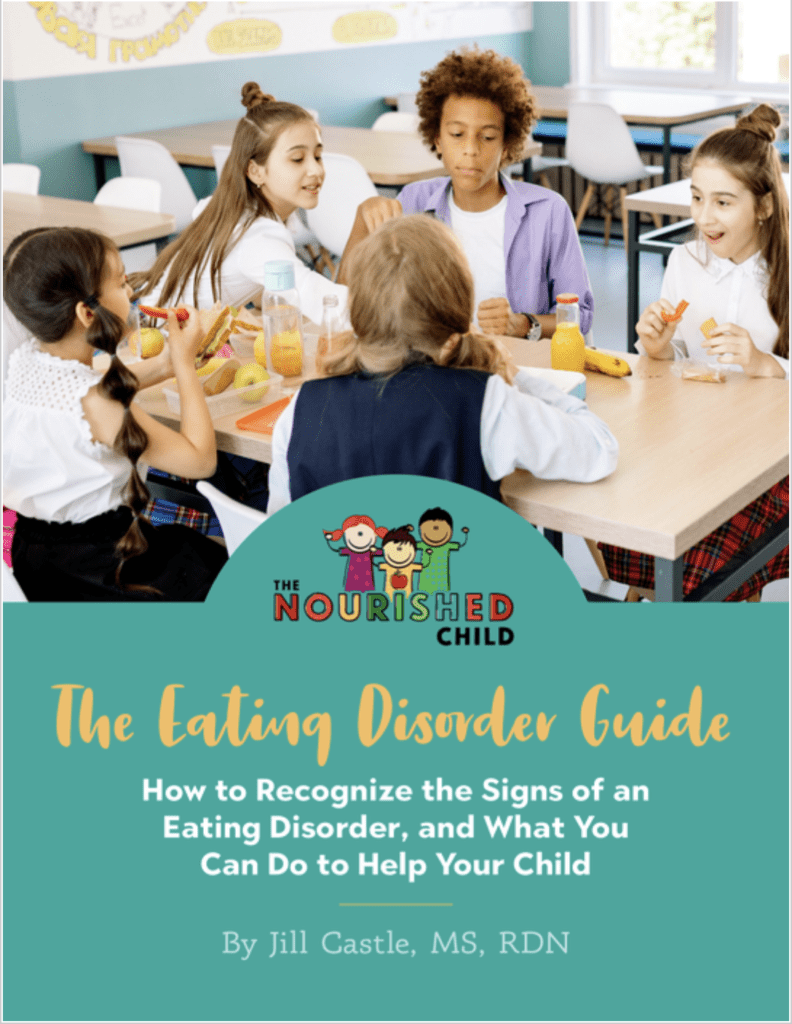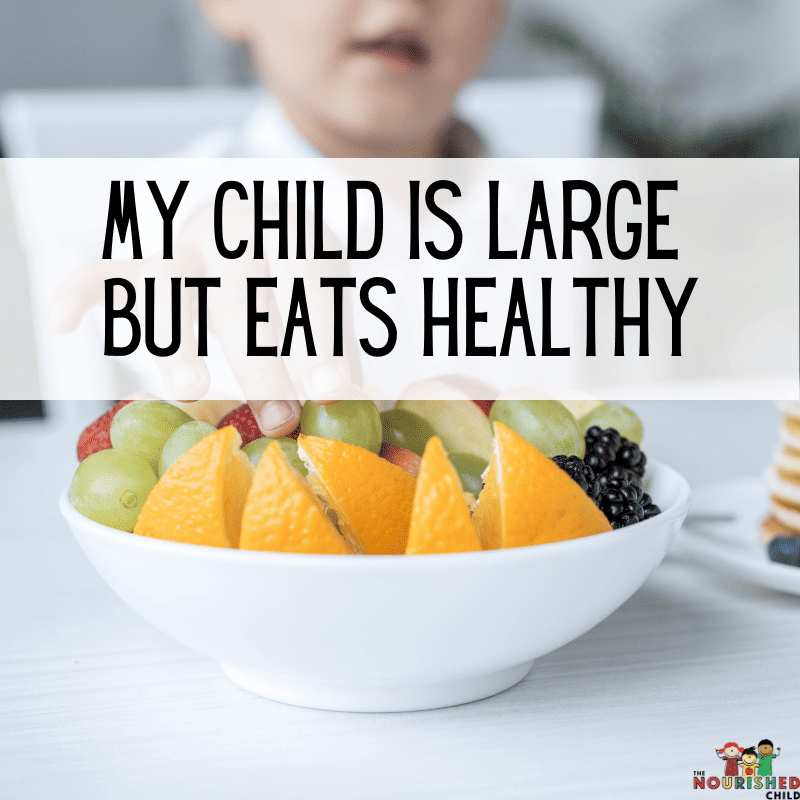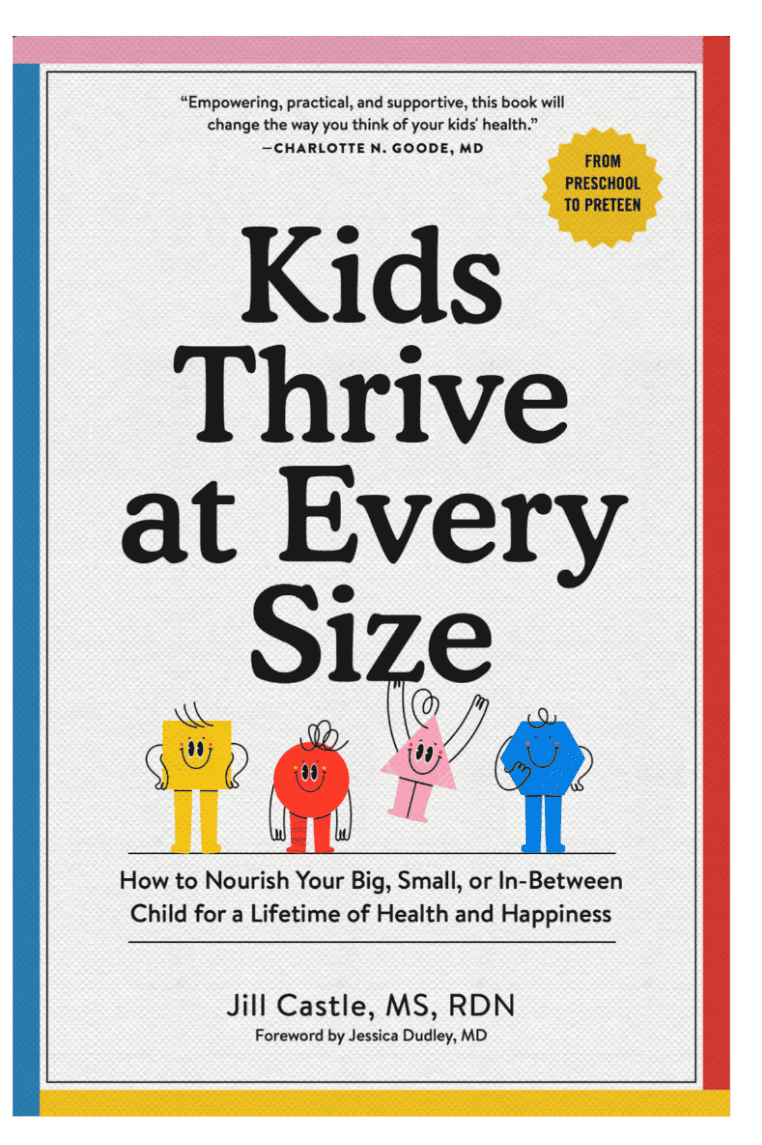How to Help When Your Teen is Eating Too Much Sugar
March 26, 2024
Is your teen eating too much sugar? Understand why teens have sugar cravings and how you can help without making your child’s sugar intake a bigger issue.
Recently, a young client of mine asked for help with her sugar cravings. She said she couldn’t stop thinking about sweets and was losing control of her eating when she ate them.
“I want to know how to get rid of my sugar cravings,’ she said.
“I’m not sure it’s entirely possible to get rid of sugar cravings,” I said. “But we can explore some ways to calm them down.”
In this article, I’m reviewing my tips to help the teen who is eating too much sugar.
As a pediatric dietitian who’s raised four children, I know it can be upsetting to watch your teenager overeat sweets. If they’re eating in secret, losing control of their eating, or binge eating, you may be worried the behavior is bigger than sugar.
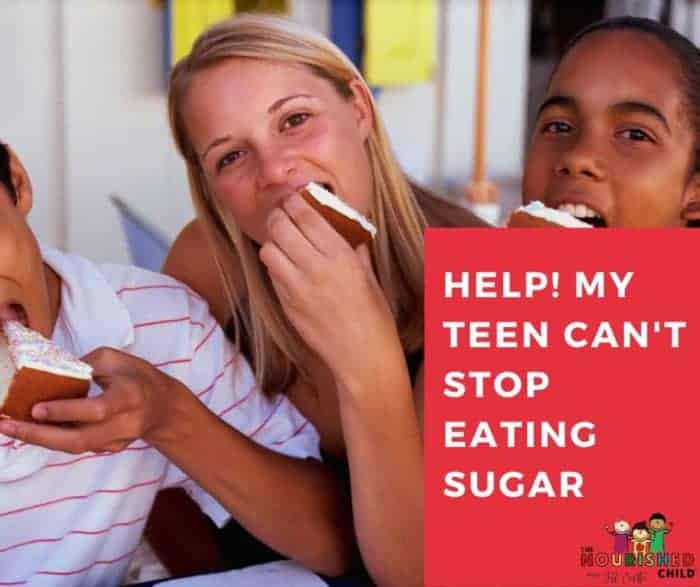
Why Do Teens Crave Sugary Treats?
The main reasons teens crave sugar, a carbohydrate, are physical hunger, growth, responding to desire and the reward center of the brain, food parenting, and habit.
Physical Hunger
When blood sugar levels decline, the hunger hormones fire, telling the brain and body it is time to eat. Carbohydrates, especially simple carbohydrates, like sugar-sweetened beverages and sweet foods, satisfy hunger – quickly!
Dopamine and the Reward Center of the Brain
Sugary foods engage the pleasure center of the brain and feel-good chemicals, like dopamine. Dopamine helps teens remember that something tastes good and is enjoyable to eat. That memory triggers a desire to eat more sweets and get that dopamine hit again, which feels good. This cycle is self-perpetuating.
Growth
When teens are in a growth spurt, an increase in appetite is common.
Food Parenting
Some parents have more concern about sweets and monitor their teen’s sugar consumption habits, especially when they appear to be eating a lot of sweets and treats.
Parents may fall into the ‘no sweets at all’ camp, eliminating every speck of sugar from the home, hoping this will improve the sugar situation and control their teen’s eating.
However, because teens are independent, they can acquire sweets on their own.
Essentially, you don’t have the control you used to have when your teen was younger, so trying to exert control, especially over food, often backfires.
It’s important to understand why your teen might be drawn to sweet foods, and work with them rather than trying to control food.
Remember, the more you make sweets forbidden or taboo, the more your teen may want to eat them.
Learn more about Food Parenting.
Habit
Last, some teens may have developed a sugar habit, something that was probably initially rooted in one of the above. When a teen has a habit of turning to sweets and treats, they are at an increased risk for emotional eating.
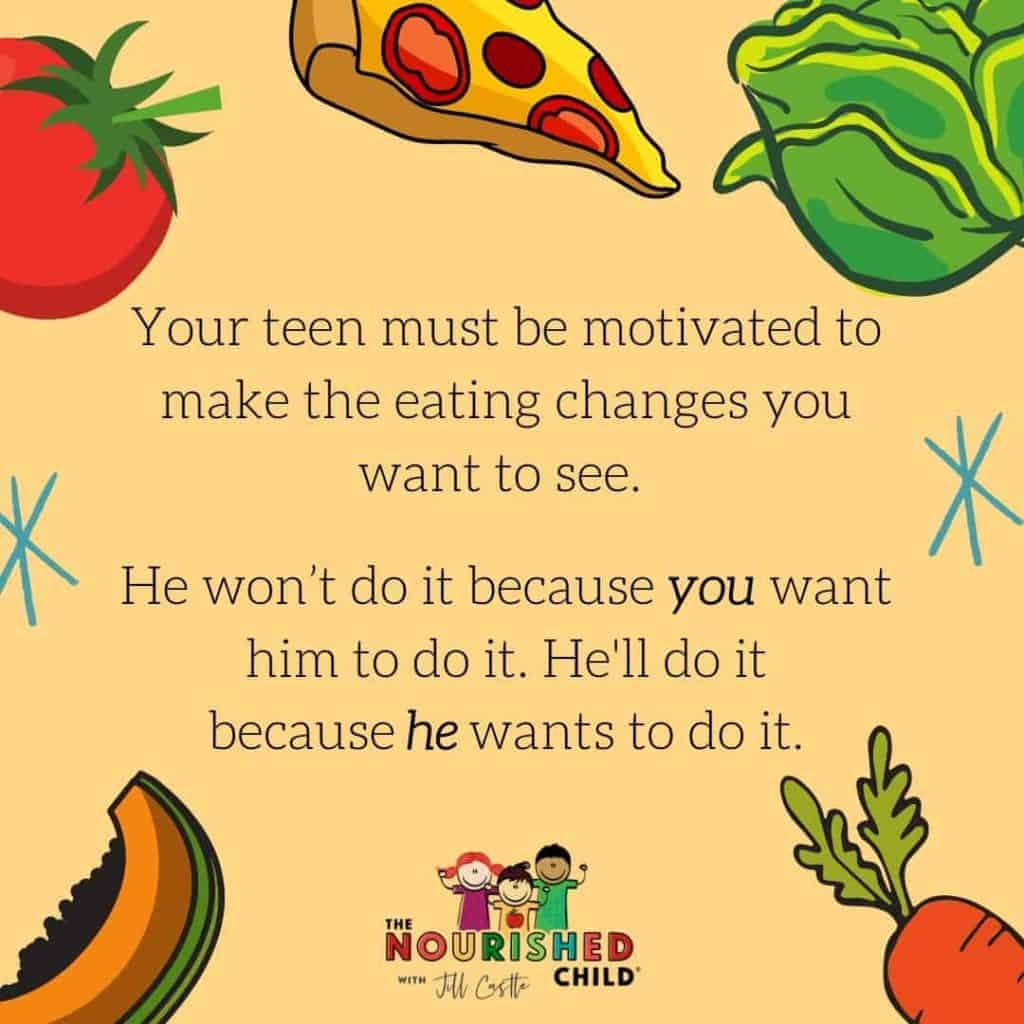
How to Help Your Teen Reduce Sweets and Increase Healthy Foods
Desserts, candy, fruit juice, and sugary drinks will always be around. They aren’t going to disappear.
While you may have the urge to control them and push for a healthier diet, doing so may cause more problems.
Yet, you probably don’t want to stand by, watching your teen head down a path of overeating too much sugar and developing a higher risk for other medical conditions.
As a registered dietitian, these are the things I work on with my clients to tame the sweet tooth and eat less sugar:
Teach Your Teen How to Better Balance Their Daily Calories
Sweets and treats are fine to eat, but they should make up roughly 10% of the daily calories from the diet, on average. This aligns with the Dietary Guidelines for Americans (DGA) and the World Health Organization (WHO) guidelines for added sugars.
This will be a stretch goal for many teens. Whatever the sugar content of your teen’s diet right now, encourage them to reduce the amount of sugar by a small amount.
Most of what teens eat should be nutritious foods from the food groups (protein foods, whole grains, fruit, vegetables, and dairy (or a fortified, non-dairy substitute).
Read: Managing Sweets with the 90-10 Rule
Let your teen in on this reasonable and attainable food balance. It allows them to have a sugary treat or two each day, on average, and doesn’t completely eliminate them.
Your teen is smart enough to understand that daily treats are fine as long as they “fit” into a nutritious and varied diet.
Loosen the Reins On High-Sugar Foods
It feels counter-intuitive to make sweets more available, but sometimes this is just what a teen needs, especially if they’ve been experiencing food restriction.
For teens, it can be reassuring that indulgent foods are available, and not taboo.
To do this, regularly plan sweets during the week. Make the sweet stuff predictable, such as homemade desserts on the weekend, or ice cream with family movie night.
Don’t Shame or Blame Sugary Snacks
Try not to be judgmental about sweets and treats. By the time your teen enters adolescence, they’ve heard plenty of “good food” and “bad food” messages.
Save the lectures and the warnings about prediabetes, high blood pressure, and cardiovascular disease. They won’t change your teen’s interest in sweets and treats.
Making your teen feel badly about liking something, or wanting something, may push them toward it, rather than away from it.
(I remember the boyfriend my parents didn’t like. Man, did I want to hang out with him even more!)
Remember, teenage brains are driven to be independent, impulsive, and sometimes oppositional.
Taking a negative stance on sugary foods or too strong a stance on a “healthy diet” can fuel their oppositional fire.
“Mom thinks dessert is bad for me…Well, that’s a good reason to eat it, then!”
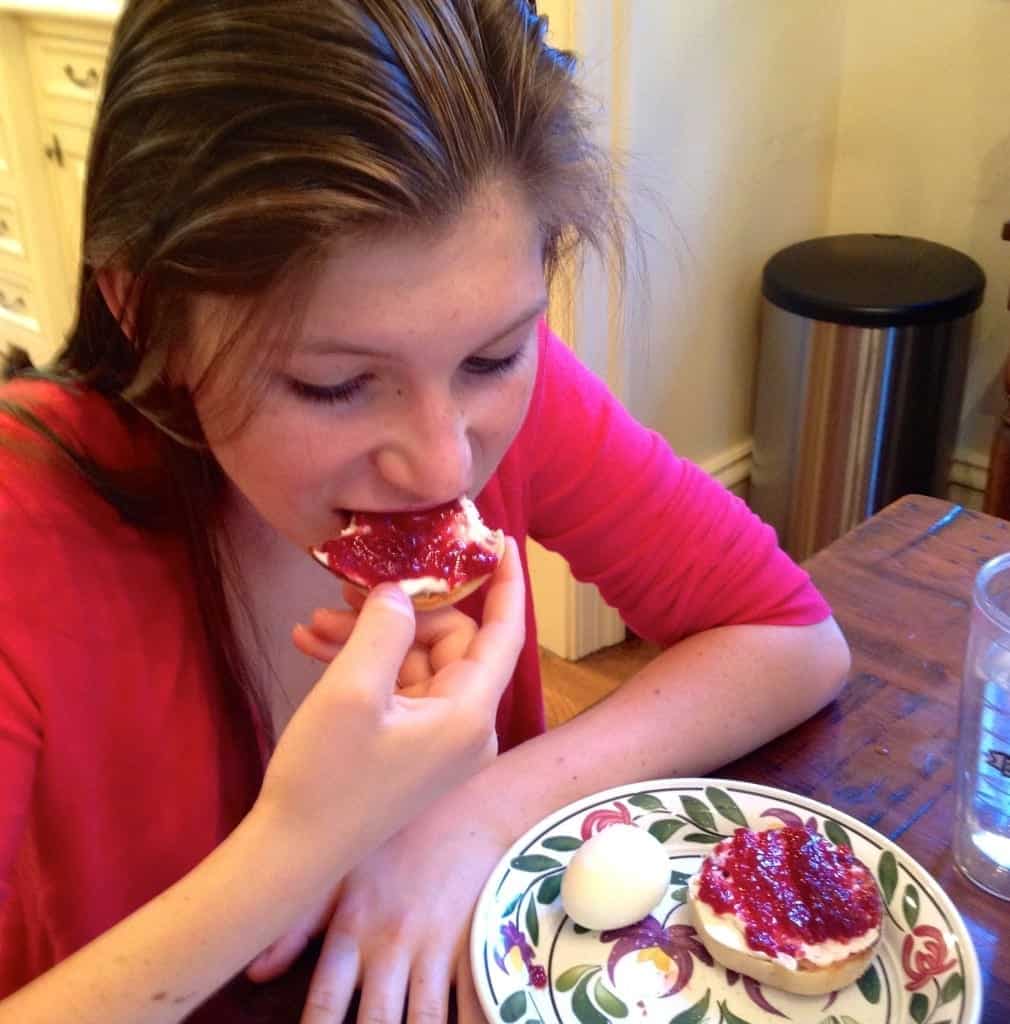
Promote Your Teen’s Autonomy with Healthier Choices
The job of parenting is to raise autonomous kids. Kids who can take care of themselves, make good choices, and be self-sufficient.
During adolescence, it’s time to start transferring some of the decision-making around food and let the chips fall where they will. Let them head to the convenience store or the coffee shop. Yes, they may choose soft drinks, other sugary beverages, or junk food.
The bottom line: you don’t have control, they do. Start empowering them to make good decisions.
I remember saying to my teens, “It’s your body, it’s your decision about what goes into it.”
Role Model Healthy Choices and Eating
Even though it seems like your teen doesn’t care and isn’t watching you, they are. My kids paid attention to what I made for dinner and how I fed myself at lunch.
They noted what I chose to snack on. Yours do this, too.
I don’t need to tell you to eat what you want your teen to eat. To move like you wish your teen would. Or to enjoy and respect the role of sweets in the diet as you want your teen to do.
You instinctively know this already. Be a good role model for your teen.
Model eating sweets in healthful ways – as part of your meal, in reasonable portions, and eating with attention and enjoyment.
Check In With Yourself
Are your teen’s eating habits triggering you? Causing stress and anxiety about your child’s health?
Let me release you from all this worry. You’re not in charge of your teen’s eating. You never have been. The only thing you’ve ever been in charge of is the environment in which they live.
Your teen needs to learn to navigate all foods, including those with extra sugar and empty calories.
While there may be more acne or extra weight gain as they learn to moderate a high sugar intake, the fact is, they need to come to terms with their choices, and the consequences, and use their internal motivation to make any changes.
DYK? There’s a difference between added sugar vs. naturally-occurring sugars. Natural sugars are A-OK! You can find the type of sugar on the food labels and ingredients listings on food packages.
Encourage Young Adults to Journal Their Thoughts and Feelings
Some teens are unaware of their eating tendencies. Some are fully aware, and bothered by the sense that they have no control over sweets and treats.
One way to increase awareness of triggers and food cravings is to keep a journal. Writing down the urges, thoughts, and triggers that prompt a desire to eat is one of the best ways to help teens self-reflect and be ready for a variety of scenarios.
Your teen may figure out on their own through journaling that loneliness or boredom are triggers for eating too much sugar. This self-awareness is the first step to managing cravings and creating healthy habits.
Practice Mindful Eating
Mindful eating is being fully present with all the senses during the process of eating. When one appreciates the sight, smell, taste, texture, and sound of food, it slows down the overall pace and helps teens tune into their appetite cues.
Mindful eating is especially helpful when practiced with sweets.
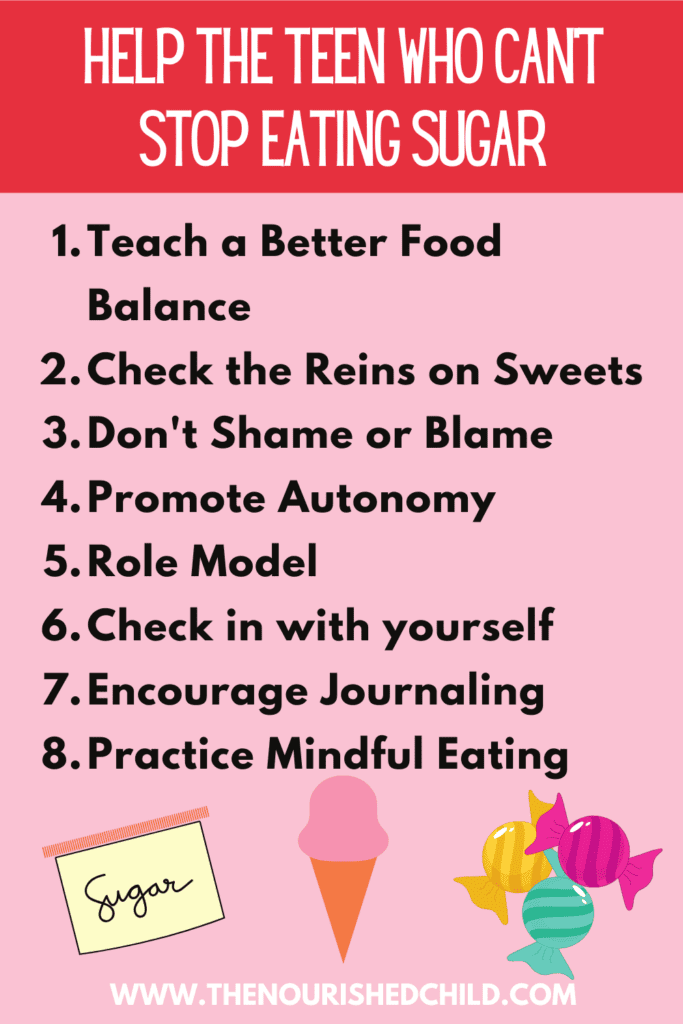
Perspective From a Mom Who’s “Been There”
I’ve raised a few teens myself, and yes, it’s hard to watch them overeat sweet treats, or lay on the couch all day and not exercise.
I totally get it! It’s easy to go down the rabbit hole of worrying about negative side effects.
However, I’ve also watched my teens get tired of feeling tired, or start to worry about the fact they can’t fit into their favorite jeans. I’ve seen them connect food or lack of exercise – and a high-sugar diet – as the major culprit to their body dissatisfaction, and make changes on their own.
This is critical.
When your teen can connect the dots and recognize problematic eating habits, they have the power to make changes. Internally-motivated changes will be far more powerful and last longer than any external motivation you can offer.
When your teen can change themself, they’ve reached a level of autonomy that is approaching adulthood.
Resources for Feeding the Teen
- Check out our classes, workshops and guidebooks designed to help all parents nourish their kids, no matter their age or condition, inside and out.
- The Nourished Child shop has tons of resources!
- The Eating Disorder Guide will help you determine and navigate problematic eating in teens.

Jill Castle, MS, RD
I like empowering parents to help their children and teens thrive at every size with realistic advice centered on healthful habits around food, feeding, nutrition and health behaviors. As a pediatric dietitian and author, my goal is to share strategies and realistic advice to help you raise a healthy and happy child through my articles and podcast.

